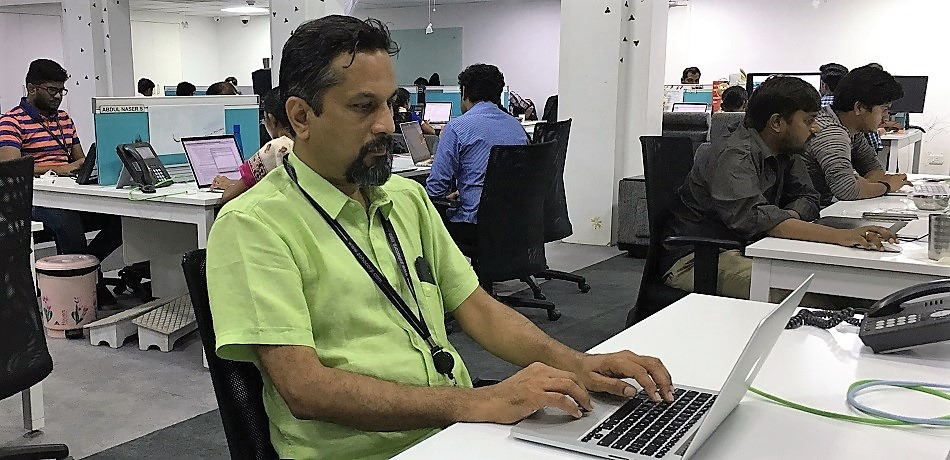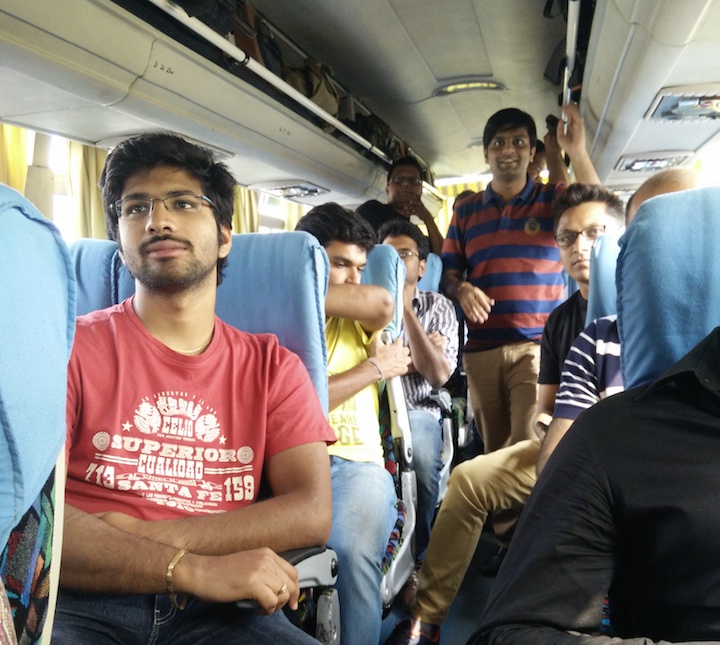
Photo credit: Pixabay.
(This article was co-authored with Prasanna Krishnamoorthy.)
There are so many ways to tell the SaaS story blooming in India, where people are discovering there’s more to internet startups than ecommerce.
We could start by throwing some numbers at you.
- 6,100 tech startups selling software-as-a-service have sprouted in India since 2010.
- 630 SaaS companies raised US$1.98 billion in external capital investment in the past seven years. (Source: Tracxn)
- A handful of SaaS companies rake in annual revenues of over US$100 million.
- Zoho, the big daddy of India’s SaaS wave, is sitting pretty at the top with revenues north of US$500 million.
- Zoho and Freshworks, which employ over 4,000 employees between them, have created a massive ecosystem in Chennai for SaaS startups to be created.
Well, the numbers are just conversation starters. This story will unfold with a hero: a startup from Chennai, India’s SaaS capital with the highest concentration of startups selling software-as-a-service on the cloud.
Our hero is not one you’ve heard about a million times in the media with multiple venture capital funding announcements. It’s a company which has tasted failure twice before arriving at a winning formula, capitalizing on some unique advantages that SaaS startups have in India.
OrangeScape’s third product – workflow automation software Kissflow – is currently earning annual recurring revenues just south of US$10 million with an enviable gross margin of 83-85 percent. What makes it sweeter is that Kissflow was built almost entirely on customer capital – and revenue earned.
The most powerful lure for SaaS is that it is a recurring business. “This month, even if I don’t sell to a single customer for some weird reason, I will still be making money – whatever we earned last month will come in this month too. That helps us invest all the money in growth, without worrying too much [about sales],” founder and CEO of OrangeScape Suresh Sambandam tells me.
Unfair advantage
In the funding boom of 2015, 1,341 SaaS startups were founded in India, according to Tracxn’s database. In 2016, the number was 707. This year so far, 26 new companies have started building SaaS products out of the country.
While a chunk of them might have been fueled by irrational exuberance – probably lured by reports of startups raising millions of dollars in funding, especially in 2015 – most others are riding on a couple of unfair advantages India enjoys in the SaaS landscape.
India’s tech talent pool, for one. For three or four decades India has been the world’s top outsourcing destination for IT services. “In the last 25 years, every global software company worth its salt has had its own development center in India as well,” points out Alok Goyal, one of the founders of Stellaris Venture Partners, which has a US$100 million maiden fund. “So it’s not that they are simply outsourcing tech services to India but they have their own captive centers here. Initially, these captives were only maintaining old software products of the companies, but lately, they have been developing cutting-edge new products, too.”
Before starting Stellaris with Ritesh Banglani and Rahul Chowdhri, Goyal and his co-founders were investors with Helion Venture Partners. Goyal had led Helion’s investments in Indian SaaS companies Whatfix, Axtria, Pipemonk (acquired by Freshworks), and Linguanext (acquired by Fidel Technologies).
That allows us to iterate, build, and do product-market-fit testing at a much lower cost compared to most companies building similar products outside India.
“Today, India has a much larger pool of global product managers, which didn’t exist earlier,” Goyal says. “Even if you consider the B2C (business-to-consumer) tech companies in India – say Zomato, Flipkart, BigBasket, and so on – at their core is a software product, for which they have to develop product roadmaps, do QA (quality assurance) testing, give constant updates, and manage the entire product cycle. All these companies, therefore, have world-class product managers.”
Add to that the number of techies returning home to India from the US and other developed countries. So if you look at the sheer supply of talent, it has been going up year after year. Thanks to the millions of engineering graduates coming out of India’s colleges every year, the country also has a large pool of developers. “That allows us to iterate, build, and do product-market-fit testing at a much lower cost compared to most companies building similar products outside India,” Goyal says.
This adds to the capital efficiency of running a tech startup out of India.
Like other SaaS companies here, OrangeScape too made good use of this unfair advantage. “We ended up hiring our entire pre-sales team for Kissflow from the IT services companies,” Sambandam says, adding: “We don’t poach from other product companies like Zoho or Freshdesk (now renamed Freshworks).”
In particular, Chennai has an even higher advantage as between Zoho, Freshworks, Kissflow, and Chargebee, there are around 5,000 people working in SaaS tech. “Zoho alone has 3,000 techies and Freshworks about 1,000. There is no other city in India which has this kind of concentration of talent. That’s why, within India, Chennai has become attractive for SaaS,” Sambandam says.
See: SaaS is the new black – and it has found a place in Chennai

Sridhar Vembu, founder and CEO of Zoho, in his Chennai office. Photo credit: Aravind Natarajan.
Turning point
Over the last decade, the notion of selling a software product underwent a paradigm shift. Earlier, you had to dance and prance for months to woo clients. Enter the “inbound marketing / inside sales model” and courting shifted from the hands of wily salesmen to clever marketers on the internet.
You could be sitting pretty in India’s southern corner and selling to clients in the US and other developed markets, as Kissflow, Freshworks, Chargebee, and several others are doing. This cost advantage doesn’t come to play for young SaaS companies in the US.
With this new model, most of the selling is done by internet marketing alone, which generates inbound enquiries for products through demo requests or signups for trial. Everything is done by marketing – from positioning the product right, helping customers discover the product, demos, and trials to pricing. So customers are already experiencing the product when the sales team goes in like an expert advisor. The team spends about two to three hours online giving customers use cases, helping them build the first prototype, go live, and get it running. Sales becomes more of a fulfillment process.
I haven’t met any of the customers face-to-face, not even those in India. Not even customers with whom we have US$400,000 contracts.
“With the inbound marketing / inside sales model, the buying decisions are won by the customer’s perception of the product, his experience, and so on. Nothing is sold by a salesperson convincing a customer to buy,” explains Sambandam. And this is an area where Indian SaaS startups have innovated and become savvy over time, focusing on the user’s first impressions and easing the onboarding process.
Kissflow has over 10,000 paying customers, across 120 countries. Not a single one of those customers was acquired through direct sales. “I haven’t met any of the customers face-to-face, not even those in India. Not even customers with whom we have US$400,000 contracts. Every aspect of marketing and sales happened over the web – meetings, emails, collaborations, contract editing, digital signatures,” Sambandam says.
He cites the example of a company in his home city, Chennai, which asked if the Kissflow team could visit their office and give a product demo. “We refused. Because once you start going to their offices to do sales, they will expect the same for support. So we told them we do everything online.”
There are two distinct classes within SaaS companies: those selling software products to enterprises and those focusing on products for small-and-medium-sized businesses (SMBs). The inbound marketing / inside sales model gives the latter class of software products for SMBs an additional edge.
In the enterprise class, the ticket size of the sales will be larger and the customer sort of expects you to be there in the local market. “If you have to be in the US, you incur the same kind of cost structure as a US company. So there is a natural barrier there,” Sambandam points out.
The majority of Kissflow’s clients are SMBs in the US. Likewise, the US is the biggest market for customer support software maker Freshworks (earlier called Freshdesk), the first Indian startup to enter Gartner’s Magic Quadrant for customer engagement. While initially, Freshworks was doing everything – from generating sales leads to closing deals – from its home base in Chennai, many of the larger deals didn’t materialize because potential customers expected a Freshworks team to meet and close them.
“If we ever lose a potential customer, we try to find out why we lost. We lost a few big leads in the UK; that’s when we figured out that they need to meet someone personally to find out more. It was hurting us a bit that we were not present in the local market. That is why we opened an office in San Francisco, and then another one in the UK and later, Sydney,” Freshworks founder Girish Mathrubootham told Tech in Asia, adding that the decision helped his company bag many big-ticket accounts. But Freshworks invested in overseas offices only after its product and overall business model had stabilized.
For 5-7 years, no other company smelt that model. Zoho had no competitors for a long time.
Most SaaS companies start with pegging their products at a certain price point and eventually end up going to larger customers. “There will be a price point where there’s a need for a feet-on-street sales model. One of the founders might have to move base to the target market. You might even have to hire product talent there,” says Goyal.
The good news is that you don’t need it upfront.
One of the SaaS startups in his portfolio, Whatfix, did just that recently. Its co-founder and CTO Vara Kumar moved to the US around the time Whatfix raised US$3.5 million in series A funding led by Stellaris Venture Partners.
Currently, just about 20 percent of Kissflow’s customers are large enterprises. “We would like to increase it a bit. There is a huge market out there, which we could tap. To go out there and grab it would be a challenge,” he says.
See: Secrets to scaling up globally from Freshdesk

40 SaaS entrepreneurs took a bus from Bangalore to Chennai for a SaaS-only meetup in 2015. It has now become an annual event for the SaaS tech industry. Photo credit: Tech in Asia.
See: Why are Indian startups so SaaSy? I took a bus ride with 40 entrepreneurs to find out
It started with…
Ask anyone where the Indian SaaS story began, and the unanimous answer is Zoho, whose SaaS suite serves 20 million users around the world. It was the first to grab the opportunity in 2005 to make cloud-based software products out of India for global customers. Freshworks founder Girish Mathrubootham was a product head with Zoho before striking out on his own in 2010.
Zoho was the first in India to figure out how useful Google marketing can be to generate signups for software products. It used the internet as a marketing tool, allowing potential customers to download a trial file of the product and run it. To download it, somebody at the customer’s end had to fill up a form, which would ask for contact details. Anybody who downloaded the file was considered a qualified sales lead, and somebody from the Zoho team would call them up to initiate the sales process. That model worked very well for Zoho.
We should give full credit to Zoho for sowing the seeds of SaaS in India.
“For 5-7 years, no other company smelt that model. Zoho had no competitors for a long time. Their marketing budget was very small. Now, even though everybody has woken up to Google Adwords and paid marketing has become very expensive, it is still attractive,” says Sambandam. “We should give full credit to Zoho for sowing the seeds of SaaS in India.”
In addition to access to knowledge, technology, and tools, Zoho and the SaaS ilk also milked the tremendous cost advantage in India when it comes to sales and marketing talent.
“If you hire an inside sales resource in the US, you start at a base salary of US$60,000. Another US$30-40,000 will go in commissions and incentives. So you are looking at a US$100,000 packet a year. In India, we can get it at US$15,500 (around INR 1 million). For that money, you can hire a wonderful tech sales guy,” says Sambandam.
Zoho’s success and Freshdesk’s (now called Freshworks) popularity spurred a lot of entrepreneurs to enter the SaaS landscape. We reached out to both Zoho and Freshworks for their revenue figures to illustrate their success, but being private companies, both refused to divulge financial information.
See: How this pioneer built a SaaS hub in Chennai from scratch without VC money
In the second part of this series tomorrow, we dive deep into what it takes to build a successful SaaS startup out of India.
This post The unfair advantage Indian SaaS startups have over counterparts around the world appeared first on Tech in Asia.
from Tech in Asia https://www.techinasia.com/unfair-advantage-indian-saas-startups-enjoy
via IFTTT
No comments:
Post a Comment